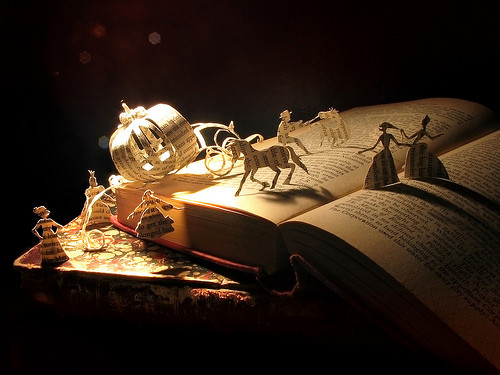Tags
adaptation, Eastern Europe, fairy tales, fantasy, folktales, high fantasy, The Witcher, translation
The Witcher: The Last Wish by Andrzej Sapkowski is the first book in the popular Witcher series (which is also a series of video games and a TV show on Netflix), introducing us to Geralt, a witcher who roams the world offering his services to rid various kingdoms of their supernatural monsters for a sizeable fee, and some of his key compatriots, including Dandelion, the troubadour and Geralt’s frequent traveling companion; Nenneke, the temple priestess who cares for him when he is wounded or needs to hide; and Yennefer, the sorceress and sometimes-lover of Geralt. We’re introduced to Geralt through a series of short stories interspersed with a series of connecting “voice of reason” vignettes that put the stories of his exploits into context.
My brother, who is a huge Witcher fan, gave me an illustrated edition of this book, and the illustrations, each by a different artist and all rendered in black, white, gray, and red at the beginning of each story, are gorgeous. It is so rare to have an illustrated reading experience as an adult, and I loved having these visual glimpses into how different artists understand Geralt and his world.
From a plot standpoint, I wasn’t expecting it to be so fragmented, but I appreciate the intent. Why waste time in the first book with a ton of needed but likely tedious exposition when you could write the exposition as its own book, playing with form and finding ways to introduce main characters, themes, and events in a much more interesting way? This also ensures that future books aren’t bloated and crazy long, a rather unnecessary characteristic of traditional high fantasy. It did make it a bit more difficult for me to get into the rhythm of the book, though. I would come to the end of a section and take a break because the momentum of the first few stories wasn’t always enough to keep me going immediately. However, I always found myself to be completely hooked once in the middle of the stories, and knowing that propelled me forward.
I generally liked most of the characters, and though the book sometimes feels a bit retrograde when dealing with sex (though let’s be honest: there are few authors in this world who write sex well), I was actually pretty impressed with how full and complex most of the main characters are, particularly the women characters, within the confines of the short stories. A few fall flat here and there, and some of the secondary characters can be hard to tell apart, but overall, Sapkowski skillfully creates nuanced characters both within and across the stories. I wondered at a few descriptions that don’t seem to fit the situation and how that impacted my understanding of a character. For example, Geralt is regularly described as “smiling nastily” at times where that seemed out of place. As the book was originally published in Polish, it brought up my perpetual questions about the nature of translation and how much the translator themself influences our experience of the text.
What I really loved, though, is the use of fairy tale tropes. Rather than relying on the magic and mythical creatures that often populate the high fantasy realm, Sapkowski grounds the fantasy in actual folklore that we humans have created to explain our world. Don’t get me wrong. There is plenty of high fantasy magic along with the folklore. However, I loved that I could identify some of the short stories according to their Aarne-Thompson-Uther Fairy Tale Index tale type. “A Grain of Truth” is ATU 425C The Search for the Lost Husband…or Beauty and the Beast. (My favorite tale type and the subject of an actual paper I wrote in grad school!) “The Lesser Evil” is ATU 709 Snow White, and ATU 510 Cinderella (or supernatural helpers) is referenced in “A Question of Price,” to name a few more common ones. Other tales were rooted in folklore more specific to Eastern Europe, like the first story in the book taking inspiration from Eastern European folkloric vampires, who were created to explain things like sudden wasting illnesses and why the aristocratic classes tended to be less susceptible to disease and famine than the peasant classes. (Check out this awesome Ologies episode on vampirology to learn more!) It was really fun to see the connection to Sapkowski’s folkloric heritage so clearly, and I may have nerded out a bit as I read.
Overall, I really enjoyed The Witcher: The Last Wish. I don’t know if I am a fan of Geralt just yet, but a friend told me the next book is where the story really starts, and I’m definitely interested to read more. Sapkowski has taken a different approach to high fantasy, putting it more at ground level, and I’m eager to see how the story evolves.

